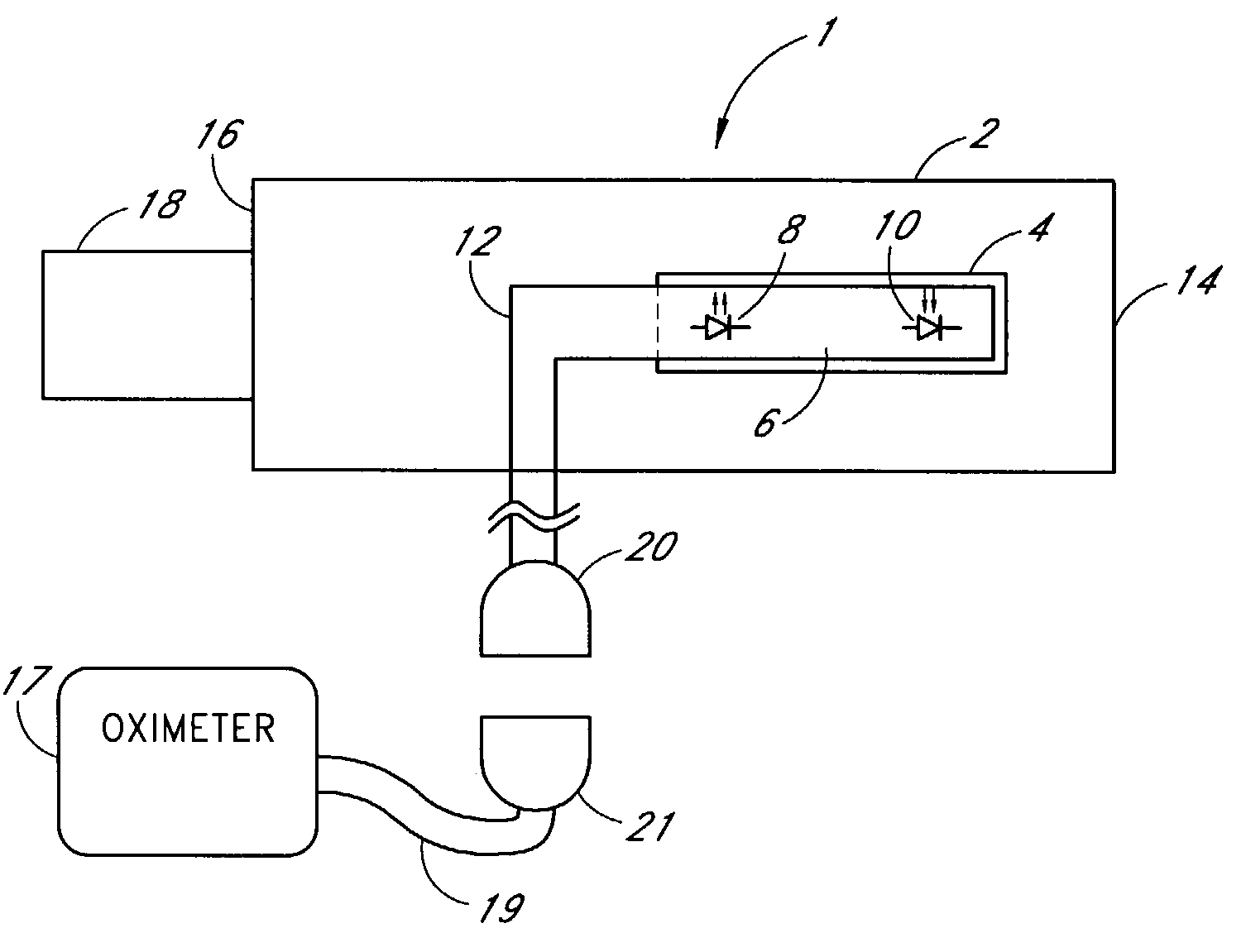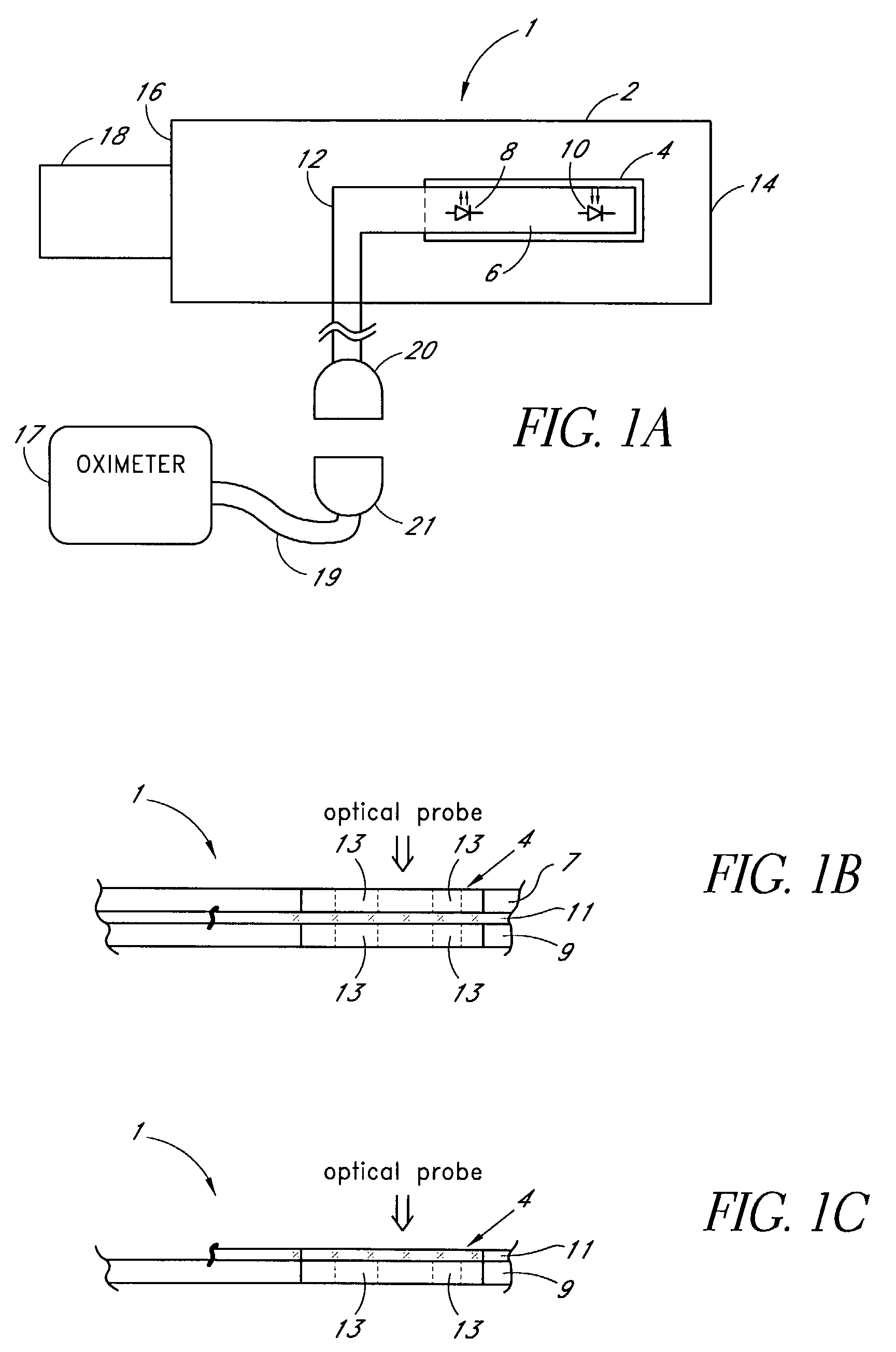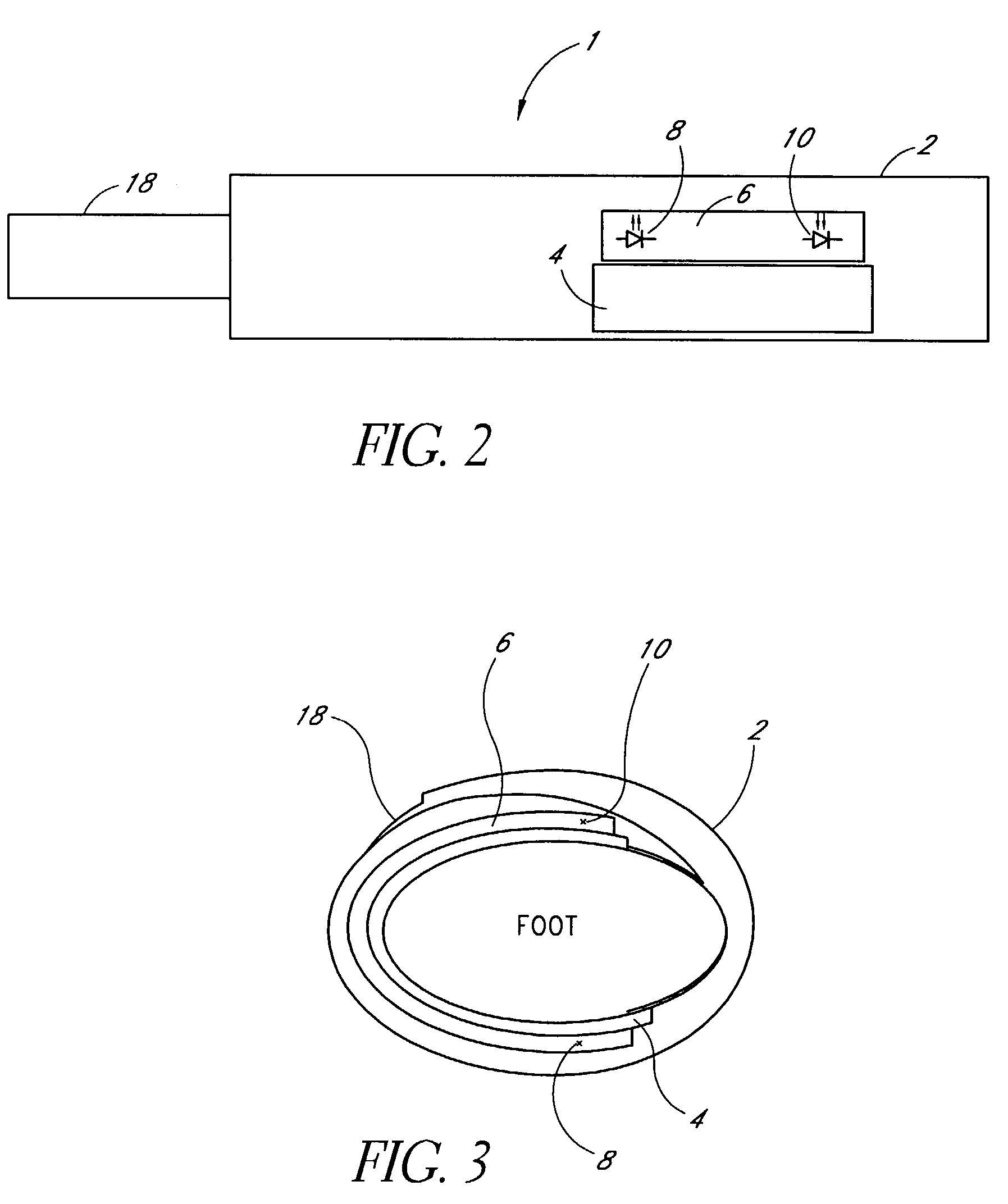Attachment and optical probe
a technology of optical probes and adhesives, applied in the field of optical probes, can solve the problems of avoiding conventional securing mechanisms that are often less than optimal, presenting adherence problems on surfaces of adhesive-based securing mechanisms, and affecting the stability of optical probes
- Summary
- Abstract
- Description
- Claims
- Application Information
AI Technical Summary
Benefits of technology
Problems solved by technology
Method used
Image
Examples
Embodiment Construction
[0010]Based on the foregoing, a need exists for a securing mechanism capable of functioning in environments where adhesive-based, spring-tension-based, and / or hook-and-loop-based securing mechanisms are often less effective.
[0011]Accordingly, one aspect of an embodiment involves an attachment for securing an optical probe to a measurement site. The attachment has an elongated support with a first end and a second end, and a dedicated area in proximity of the first end. The dedicated area receives an optical probe and includes a material that is transparent for light emitted and received by the optical probe. The dedicated area mountably receives the optical probe on the material so that in use, the material is positioned between the optical probe and a surface of a measurement site.
[0012]The optical probe may be factory-mounted to the dedicated area of the attachment as a ready-to-use sensor or probe. In the alternative, the attachment may be available as an individual component, or...
PUM
 Login to View More
Login to View More Abstract
Description
Claims
Application Information
 Login to View More
Login to View More - R&D
- Intellectual Property
- Life Sciences
- Materials
- Tech Scout
- Unparalleled Data Quality
- Higher Quality Content
- 60% Fewer Hallucinations
Browse by: Latest US Patents, China's latest patents, Technical Efficacy Thesaurus, Application Domain, Technology Topic, Popular Technical Reports.
© 2025 PatSnap. All rights reserved.Legal|Privacy policy|Modern Slavery Act Transparency Statement|Sitemap|About US| Contact US: help@patsnap.com



